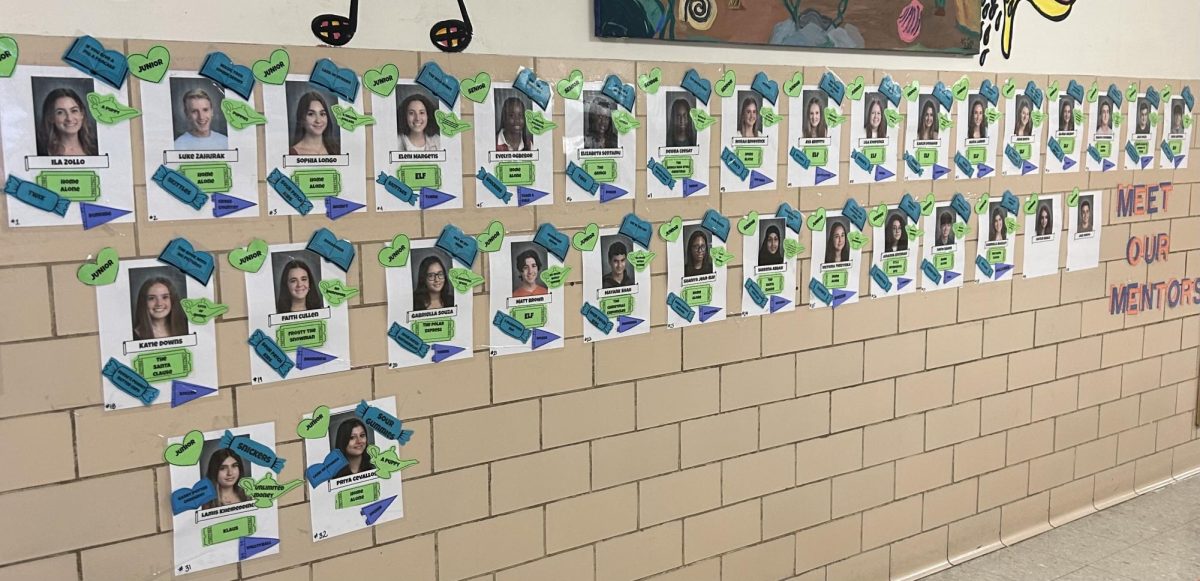
One of the most longstanding qualities of the public school education has usually been fostering, for better or worse, the academic independence of the student in order to better prepare him or her for the demands of college and the real world. If a student did not do the work, that student would fail the class. However, new programs at Walpole High are attempting to alleviate the amount of academic and social independence usually shouldered by an individual student. With the Advisory Program and the separate Intervention Program both in their second years, the school administration and the faculty are attempting to share more of these burdens with the students. No longer will the individual student be solely responsible for failing a class; now, the school will intervene and advise the underachieving student on how to better manage his or her academic responsibility. In short, 1,122 adolescents now have a surrogate parent.
The advisory program, developed by a committee led by technology teacher Dustin Scott, aims to help students bond with each other while developing relationships with their respective advisors. Due to its recent implementation, the advisory program has received mixed reviews in a distinct pattern of upperclassmen indifference and underclassman approval. When asked his opinion on advisory, senior Dan King said “Starting the process so late in high school definitely makes building new bonds difficult, causing advisory to be awkward at times.”
Conversely, sophomore Kyle Raftery, who will spend the duration of his high school years with his advisory, said, “Advisory broadens the horizons of young students. I can tell you personally that I have a great relationship with my advisor that I may have never developed without advisory.”
However, despite of these two student’s differing opinions, both agreed that advisory does seem as though administration is trying to development parental-like relationships between students and teachers. Whether these relationships will prove useful or not has still yet to be confirmed, and will most likely remain so until the program’s inaugural freshman reach their senior year.
Separately, the Working Intervention Model is a program that encourages educators to identify a failing student for an increasing level of administrative consequences – consequences meant to correct the student’s poor academic behavior.
The Intervention Model is divided into three separate tiers based on the severity of the actions being taken by the educator. Research has proven that first tier classroom methods, including time extensions and re-teaching material, are successful with 70 percent of students. The second tier of intervention is even more directive, with most of the methods taking place outside of the classroom: mandated after-school activities, placement in academic skills classes, et cetera. For the most difficult cases, one-on-one third tier programs including academic plans and the Nova Net computer classes will be expected to make great strides in student productivity.
On the pessimistic end of the spectrum, however, it is arguable that if students refuse to do their work on their own accord, they should be held accountable. However, supporters of the student intervention program refute this argument swiftly, claiming that intervention activities, which include everything from a call home to the use of Nova Net and personal tutoring, will act as a deterrent to students being prematurely placed in the Special Education program.
However, Intervention Model committee member Laura Kerr said, “Student intervention is crucial in helping struggling students reach their academic potential, which is a primary goal of education.” Mrs. Kerr also noted that an intervention can only be entirely effective if these methods supplement initial quality teaching. To insure this supplemental nature, teachers will be able to access every intervention claim filed by every teacher who has taught or is currently teaching their students. Hence, if one student does poorly in a teacher’s class, that teacher can look up the student’s intervention history and coordinate with other teachers and administrators to best curb that student’s academic behavior.
As of Wednesday, September, 28, a total of 156 students have been referred to the Intervention Program, which is 14 percent of the 1122 students at Walpole High School. With such a high number, the administrators of the Intervention Program will certainly need to be scrupulous in order to maintain its credibility.
This ideological shift – spearheaded by the Intervention and Advisory Programs – can be semi-accurately described as larger public schools emulating the smaller, familial feel of charter schools. While the class sizes in Walpole are unlikely to decrease, the success of these new initiatives ultimately lies both in the practical, sincere participation of teachers and in the accountable oversight of the Intervention program. Yet whatever happens, one cannot help but admire the steps being taken by administration to assist all students in reaching their full academic prowess.







